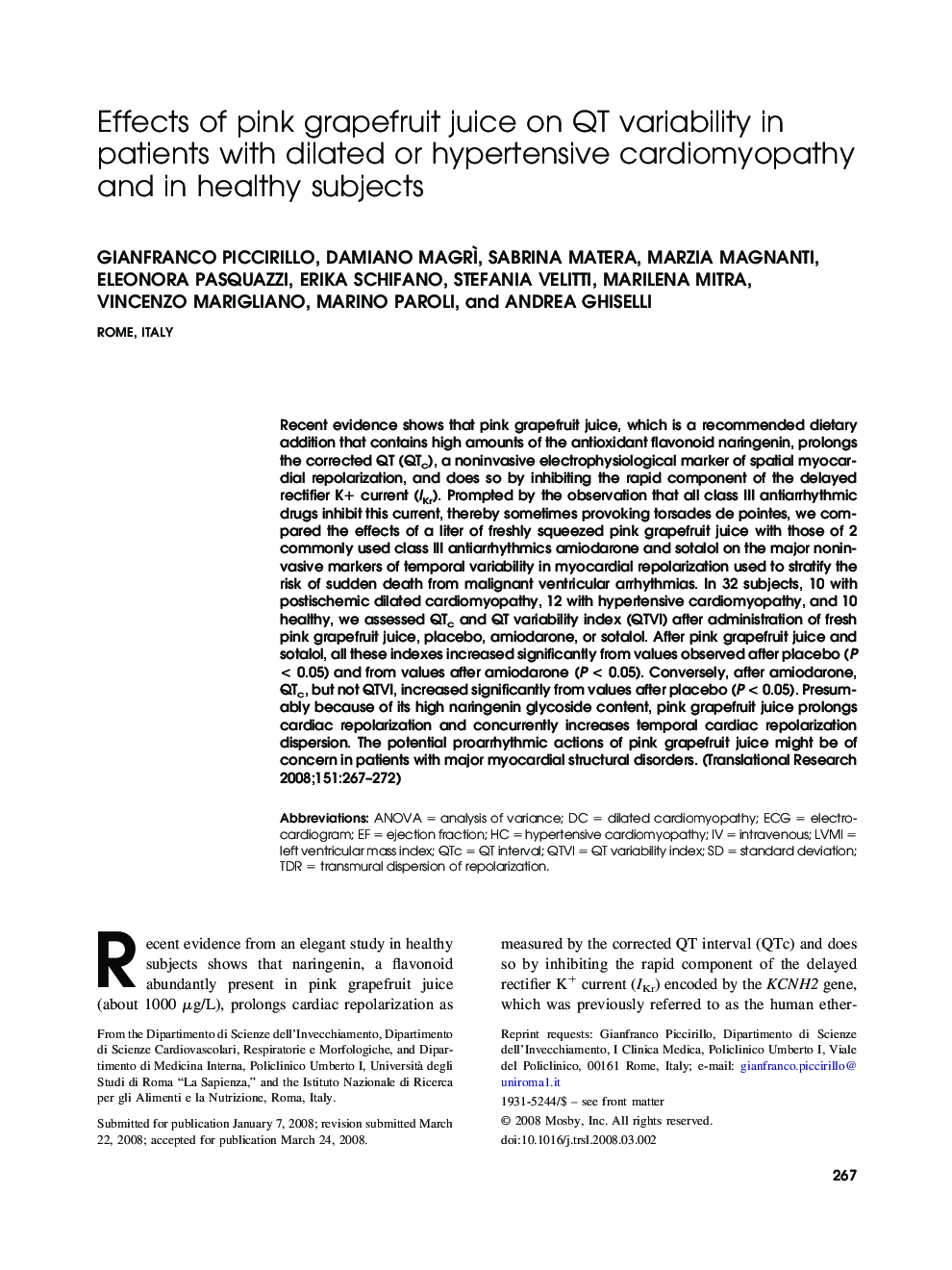| Article ID | Journal | Published Year | Pages | File Type |
|---|---|---|---|---|
| 3841369 | Translational Research | 2008 | 6 Pages |
Recent evidence shows that pink grapefruit juice, which is a recommended dietary addition that contains high amounts of the antioxidant flavonoid naringenin, prolongs the corrected QT (QTc), a noninvasive electrophysiological marker of spatial myocardial repolarization, and does so by inhibiting the rapid component of the delayed rectifier K+ current (IKr). Prompted by the observation that all class III antiarrhythmic drugs inhibit this current, thereby sometimes provoking torsades de pointes, we compared the effects of a liter of freshly squeezed pink grapefruit juice with those of 2 commonly used class III antiarrhythmics amiodarone and sotalol on the major noninvasive markers of temporal variability in myocardial repolarization used to stratify the risk of sudden death from malignant ventricular arrhythmias. In 32 subjects, 10 with postischemic dilated cardiomyopathy, 12 with hypertensive cardiomyopathy, and 10 healthy, we assessed QTc and QT variability index (QTVI) after administration of fresh pink grapefruit juice, placebo, amiodarone, or sotalol. After pink grapefruit juice and sotalol, all these indexes increased significantly from values observed after placebo (P < 0.05) and from values after amiodarone (P < 0.05). Conversely, after amiodarone, QTc, but not QTVI, increased significantly from values after placebo (P < 0.05). Presumably because of its high naringenin glycoside content, pink grapefruit juice prolongs cardiac repolarization and concurrently increases temporal cardiac repolarization dispersion. The potential proarrhythmic actions of pink grapefruit juice might be of concern in patients with major myocardial structural disorders.
